Spine Specialists Long Island
 Treatment Manhattan While working as a spine surgeon at the Hospital for Special Surgery (HSS), Dr. Kim mastered his craft. Specializing in cervical spine and scoliosis surgery, he has helped patients overcome spinal issues and injuries through surgery for many years. After serving as the Director of the Spine Fellowship, Dr. Kim has become the leader and founder of our practice. Dr. Kim’s time as a spinal surgeon has not fallen exclusively within the United States. He has dedicated time to work as a volunteer surgeon at the FOCUS hospital in Ghana, West Africa. Doing so allowed him to treat some of the rarest and most complex spinal conditions in pediatric and adult patients. Those who find themselves dealing with extremely rare or severe spinal conditions should feel confident coming to our practice for care. Dr. Kim has successfully operated on hundreds of rare and complex spinal deformities and takes this valuable experience into every operation he performs. Our practice understands how devastating spinal issues can become. We also know that the nature of spinal surgery is extremely invasive. We want our patients to trust that spinal surgery will only be recommended when all of the treatment options have been exhausted. Dr. Kim and the rest of our staff’s primary goal is to get each patient who visits us back to full strength. When surgery is required for this goal, there are few better teams to work with than the one here at Dr. Han Jo Kim’s office.
Treatment Manhattan While working as a spine surgeon at the Hospital for Special Surgery (HSS), Dr. Kim mastered his craft. Specializing in cervical spine and scoliosis surgery, he has helped patients overcome spinal issues and injuries through surgery for many years. After serving as the Director of the Spine Fellowship, Dr. Kim has become the leader and founder of our practice. Dr. Kim’s time as a spinal surgeon has not fallen exclusively within the United States. He has dedicated time to work as a volunteer surgeon at the FOCUS hospital in Ghana, West Africa. Doing so allowed him to treat some of the rarest and most complex spinal conditions in pediatric and adult patients. Those who find themselves dealing with extremely rare or severe spinal conditions should feel confident coming to our practice for care. Dr. Kim has successfully operated on hundreds of rare and complex spinal deformities and takes this valuable experience into every operation he performs. Our practice understands how devastating spinal issues can become. We also know that the nature of spinal surgery is extremely invasive. We want our patients to trust that spinal surgery will only be recommended when all of the treatment options have been exhausted. Dr. Kim and the rest of our staff’s primary goal is to get each patient who visits us back to full strength. When surgery is required for this goal, there are few better teams to work with than the one here at Dr. Han Jo Kim’s office. Our Services
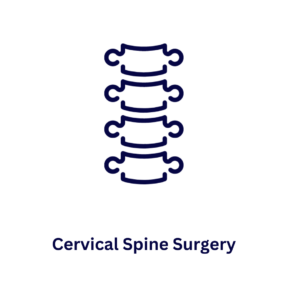
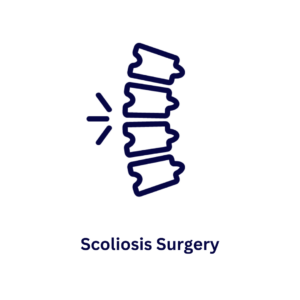
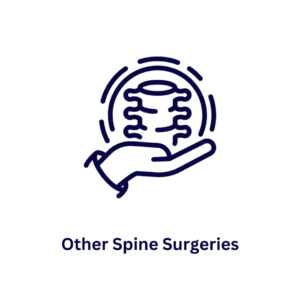
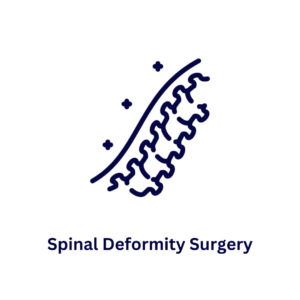
Scoliosis: What Happens If It Is Left Untreated?

What Is Scoliosis?
Scoliosis is a condition in which the spine curves to one side. It is characterized by an abnormal curvature of the spine that may cause a noticeable spine deformity. The spine may curve to the side and may cause the rib cage to protrude. In the case of a severe curve of the spine, it may cause the chest to be squeezed and the ribs to be pushed up against the spine. The most common cause of scoliosis is a congenital defect. However, scoliosis may also result from a spinal injury, a tumor, or a degenerative disease. If the condition is left untreated, it can lead to spine deformities, such as an increased curvature of the spine, a kyphosis, or a lordosis.
What Are The Long-Term Consequences Of Untreated Scoliosis With Spine Specialists Long Island?
Scoliosis is a medical condition that causes the spine to curve to one side. It is a condition that can cause intense discomfort, pain, and even disability if left untreated. It can also lead to other medical conditions, such as spinal stenosis and arthritis. Sometimes, people are unaware that they have scoliosis and are not treated for it. If left untreated, the condition can become severe and cause various problems. It is not always easy to get an accurate diagnosis of scoliosis because it is not always easy to tell the difference between scoliosis and other conditions. There are a few ways to tell if you have scoliosis. One way is to take a 3D or 4D scan of your spine. Another way is to have your spine specialists Long Island perform an X-ray of your spine. If you suspect you have scoliosis, getting treatment as soon as possible is best. If scoliosis is left untreated, it can lead to several severe consequences.
- Chronic Pain: The uneven curvature of the spine can cause pain in the back and neck, which can worsen over time if left untreated.
- Reduced Lung Function: The spine’s abnormal curvature can also affect lung function and make breathing difficult.
- Cardiovascular Problems: The heart and lungs work together; if the lungs aren’t functioning properly, it can also affect the heart’s ability to function effectively.
- Difficulty in Physical Activities: Scoliosis can limit physical activity, making it difficult to perform everyday tasks.
- Deformity: The spine’s curvature can become more pronounced over time, causing a visible deformity.
It is important to seek medical attention and start treatment as soon as possible to prevent the progression of scoliosis and reduce the risk of these potential consequences. Early detection and intervention can improve the chances of a successful outcome.
How To Prevent Scoliosis
There are many ways to prevent scoliosis, one of which is by wearing a properly fitted back brace. The brace will help to prevent the growth of the curve. However, if the brace is not worn for the recommended hours, the curve may grow, and the symptoms will worsen. If left untreated, the curve may grow and become more severe. It is important to monitor your symptoms and consult a spine specialists Long Island if you exhibit any of the following symptoms: -Sudden onset of back pain -Sudden onset of headaches -Sudden onset of neck pain -Sudden onset of arm pain -Sudden onset of leg pain -Sudden onset of problems with balance or vision -Sudden onset of numbness or tingling -Sudden onset of weakness -Sudden onset of a rash Do not ignore these symptoms.
Contact Us: Spine Specialists Long Island
Scoliosis is a condition in which the spine is curved to the sides. It is a disease that can cause many complications. If left untreated, scoliosis can cause back pain, leg pain, and even difficulty breathing. In some cases, scoliosis can also cause curvature of the spine, which is a severe condition that can cause paralysis or death. Left untreated, scoliosis can also cause a curvature of the spine. It is essential to seek medical attention if you suspect you might have scoliosis. There are many treatments for scoliosis, such as wearing a brace, wearing a back support, or exercising. If the condition does not improve, surgical procedures may be necessary. Contact Dr. Han Jo Kim, spine specialists Long Island, today to get the treatment you need!
What Is Spinal Osteotomy?
Spinal osteotomy is a surgical procedure aiming to relieve pressure on the spinal cord or nerve roots caused by severe scoliosis, degenerative disc disease, or other spine abnormalities. During this procedure, bone from the affected spine area is cut and repositioned to either lengthen or shorten it. This can help to restore proper alignment and reduce compression on the nerves. It’s best to contact Dr. Han Jo Kim, a spine specialists Long Island, for more information how to treat your Spinal osteotomy.
Different Types Of Spinal Osteotomy

There are different types of spinal osteotomy procedures depending on your specific condition and needs. The most common type involves removing a wedge-shaped part of one vertebrae and then reattaching it in a new position once the correct alignment has been restored. Another method involves cutting both sides of vertebrae to reduce its size, then fusing it to a neighboring vertebra to stabilize the spine.
Before undergoing spinal osteotomy surgery, your doctor will work with you to create a customized treatment plan based on your specific condition and goals. This may involve additional therapies or medications designed to help relieve any discomfort caused by your condition while also helping to prevent further damage. The surgery itself is typically performed under general anesthesia and takes around two hours to complete. While most people can recover fully within four months of their surgery, it’s important to follow all post-operative care instructions closely in order to ensure a healthy recovery.
If you have severe scoliosis or degenerative disc disease that is causing compression of the nerves in your spine, talk to your doctor about whether spinal osteotomy surgery may be a good treatment option for you. With proper care and rehabilitation following your surgery, you should be able to return to all of the activities you enjoy in no time at all.
Spinal osteotomy is a surgical procedure that can relieve pressure on the spinal cord or nerve roots caused by severe scoliosis, degenerative disc disease, or other spine abnormalities. It involves removing a wedge-shaped part of one vertebra and then reattaching it in a new position once the correct alignment has been restored. There are different types of spinal osteotomy procedures depending on your specific condition and needs. Before undergoing this surgery, your doctor will work with you to create a customized treatment plan that may include additional therapies or medications in order to help relieve any discomfort caused by your condition and prevent further damage.
Surgery itself is typically performed under general anesthesia and takes around two hours to complete. While most people can recover fully within four months of their surgery, it’s important to follow all post-operative care instructions closely to ensure a healthy recovery. If you have severe scoliosis or degenerative disc disease that is causing compression on the nerves in your spine, talk to your doctor about whether spinal osteotomy surgery may be a good treatment option for you. With proper care and rehabilitation following your surgery, you should be able to return to all of the activities you enjoy in no time at all.
How To Cope With Spinal Osteotomy Pain
Coping with spinal osteotomy pain can be difficult, but with proper care and rehabilitation, you should be able to recover fully and return to all of the activities you enjoy. Here are a few tips to help you manage your pain:
-
- Talk to your doctor about your pain medication options and follow their instructions closely.
- Ice the affected area frequently to help reduce inflammation and swelling.
- Apply heat to the area as needed to help relieve stiffness and discomfort.
- Maintain good posture and alignment when standing, sitting, or walking.
- Perform stretching and strengthening exercises as directed by your doctor or physical therapist.
- Take it easy and avoid strenuous activities until your doctor clears you.
With proper care and rehabilitation, you should be able to manage your spinal osteotomy pain and make a full recovery.
Contact Our Spine Specialists Long Island
Suppose you are dealing with severe scoliosis or degenerative disc disease that is causing compression of the nerves in your spine. In that case, Spinal osteotomy surgery may be a good treatment option for you. It’s best to contact Dr. Han Jo Kim a spine specialists Long Island for more information how to treat your Spinal osteotomy. An osteotomy is a general word for a surgical technique. More specifically, an osteotomy involves cutting and reshaping a bone. A surgeon can complete this type of surgery in various locations such as the big toe, chin, hip, jaw, knee, and spine. People of all ages can receive an osteotomy to prevent a more significant surgery down the road, such as a knee or hip replacement. Dr. Han Jo Kim has years of experience performing cervical osteotomies. If you need a back doctor, see our spine specialists Long Island to receive a diagnosis and treatment that will get you back to feeling better in no time.
Back Structure
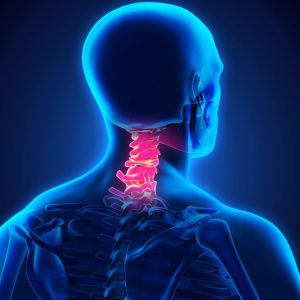
The back contains 33 vertebrae which is the name for the bones that make up the back. There are five regions of the back: cervical, thoracic, lumbar, sacrum, and coccyx. The vertebrae within these regions have numbers and names based on their location. The joint that connects each vertebrate is called a facet joint which helps provide movement in the back.
Additionally, there are discs in the back in between each vertebrate. Discs are almost like a jelly donut in between the vertebrate. They have a denser outer layer and a soft, liquid-like center. The disc protects the vertebrae from rubbing against one another, especially when external pressures such as movement occur. If there is an issue with a disc that causes the vertebrae to rub against one another, this can be extremely painful. While injuries are relatively common within the back, many back conditions are present from birth and involve growth defects.
Scoliosis is the most common of these conditions. Its associated effects impact people’s ability to walk and complete daily functions. Certain deformities like scoliosis may require surgery to fix the back’s structure and relieve pain. Severe arthritis is another condition that can cause serious problems regarding the alignment of the back. Kyphosis is the excessive curvature within the back, typically towards the cervical region. This curvature can severely impact posture and cause significant pain, especially if it worsens as you age. Kyphosis is a severe curvature that requires surgery to aid mobility, posture, and pain relief. Conditions that impact the curvature and alignment of the back may require a cervical osteotomy from our spine specialists Long Island.
Osteotomy Procedure
Various osteotomy procedures can be done for the back, depending on where the issue is. The cervical osteotomy procedure with the most significant correction is a vertebral column resection. This surgical procedure involves removing one of the 33 vertebrae in the back to help correct the alignment of the back. Additionally, the surgeon will fuse the vertebrae to a metal cage or graft after the removal of the bone. Again, there are other types of cervical osteotomies. However, this specific osteotomy has the most significant correction, depending on where your back is curved and needs improved alignment. Our spine specialists Long Island are here to help you and your back. Whether you think you may need a cervical osteotomy or another form of surgery, we are here to help diagnose you and come up with and administer the best treatment possible.
Recovery
Because osteotomy is a significant surgery, the recovery process may take longer and require more steps. After a cervical osteotomy, it is necessary to take time to rest first. You will likely remain in the hospital for a few days for monitoring. Doctors like to watch over their patients after significant back surgery to ensure there are no adverse symptoms associated with the surgery and to ensure they receive the care necessary post-operation. You can walk after the surgery if your body allows you to. Most people, however, do not end up walking right away due to pain and discomfort from the surgery. After some rest, we do recommend physical therapy. A physical therapy office with experience helping those recover from spinal injuries and surgeries would be best for your recovery. Spinal surgeries can be very dangerous, and the steps you take during recovery can determine your outcome. Going to a specialized physical therapy office will help you recover. Our Back Pain Doctor in Connecticut will walk you through the necessary steps and requirements after receiving surgery.
Han Jo Kim – Spine Specialists Long Island
A cervical osteotomy may be the proper procedure for you if you have a severe cervical spine deformation. Dr. Han Jo Kim has excellent success performing cervical osteotomies due to his training and years of experience. Our spine specialists Long Island will ensure you get the treatment you need with the best results. Contact our office today to schedule a consultation with our experts.
How is Cervical Kyphosis Treated?
Cervical kyphosis is a condition characterized by an excessive curvature of the upper spine. The symptoms of cervical kyphosis can vary depending on the severity of the condition, but may include neck pain, headaches, and difficulty moving the head and neck. Treatment for cervical kyphosis typically involves a combination of conservative measures, such as physical therapy and braces, and more invasive procedures, such as surgery. Orthopedists are the medical specialists who are best equipped to diagnose and treat cervical kyphosis. As a skilled spine specialists Long Island, Dr. Han Jo Kim is a qualified orthopedic surgeon who specializes in the treatment of the cervical spine.
vary depending on the severity of the condition, but may include neck pain, headaches, and difficulty moving the head and neck. Treatment for cervical kyphosis typically involves a combination of conservative measures, such as physical therapy and braces, and more invasive procedures, such as surgery. Orthopedists are the medical specialists who are best equipped to diagnose and treat cervical kyphosis. As a skilled spine specialists Long Island, Dr. Han Jo Kim is a qualified orthopedic surgeon who specializes in the treatment of the cervical spine.
Cervical kyphosis is often caused by poor posture, repetitive stress injuries, or degenerative conditions such as osteoporosis. In some cases, it may be due to a birth defect or trauma. Treatment for cervical kyphosis typically begins with conservative measures, such as physical therapy and the use of braces or other support devices. These measures can help to relieve symptoms and prevent the condition from worsening. In more severe cases, surgery may be necessary to correct the curvature of the spine. Orthopedists are the medical specialists who are best equipped to diagnose and treat cervical kyphosis. If you think you may have cervical kyphosis, it is important to see an orthopedist for an accurate diagnosis. Treatment for this condition can vary depending on the underlying cause, but early intervention is often the key to preventing further complications.
Other Conditions Similar To Cervical Kyphosis
There are several other conditions that can cause symptoms similar to those of cervical kyphosis. These include:
- Osteoarthritis: This is a degenerative joint condition that can cause pain and stiffness in the neck.
- Spondylosis: This is a general term used to describe age-related wear and tear on the spine. It can lead to the development of bone spurs, which can in turn cause neck pain.
- Spondylolisthesis: This is a condition in which one vertebra slips forward over the one below it. This can cause the spine to curve abnormally and put pressure on the nerves.
- Cervical herniated disc: This occurs when the soft cushioning between the vertebrae is damaged, allowing the discs to bulge or rupture. This can cause neck pain and other symptoms.
If you are experiencing any of the above symptoms, it is important to see an orthopedist for an accurate diagnosis. Treatment for cervical kyphosis and other conditions will vary depending on the underlying cause, but early intervention is often the key to preventing further complications.
What Is The Most Common Cause of Neck Pain?
The most common cause of neck pain is poor posture. This can be due to slouching, sitting for long periods of time in an awkward position, or carrying a heavy load. Other causes of neck pain include degenerative conditions such as osteoarthritis and spondylosis, repetitive stress injuries, and birth defects. Treatment for neck pain will vary depending on the underlying cause, but often includes a combination of conservative measures such as physical therapy and the use of support devices, and more invasive procedures such as surgery. Orthopedists are the medical specialists who are best equipped to diagnose and treat neck pain.
How Many People Experience Cervical Kyphosis?
The prevalence of cervical kyphosis is not well-known, but it is thought to be relatively rare. A study of patients with spinal deformities found that only 3% had cervical kyphosis. However, the condition is likely underdiagnosed, as many people with mild cases may not seek medical treatment. If you think you may have cervical kyphosis, it is important to see an orthopedist for an accurate diagnosis. Treatment for this condition can vary depending on the underlying cause, but early intervention is often the key to preventing further complications.
What Are The Symptoms of Cervical Kyphosis?
The most common symptom of cervical kyphosis is neck pain. This can range from mild to severe, and may be aggravated by activities such as driving or sitting for long periods of time. Other symptoms include stiffness in the neck, headaches, and difficulty moving the head side to side. In severe cases, nerve damage can occur, leading to paralysis or loss of sensation in the arms and legs. If you are experiencing any of these symptoms, it is important to see an orthopedist for an accurate diagnosis. Treatment for cervical kyphosis and other conditions will vary depending on the underlying cause, but often includes a combination of conservative measures such as physical therapy and the use of support devices, and more invasive procedures such as surgery.
What Are The Treatments For Cervical Kyphosis?
The treatment for cervical kyphosis will vary depending on the underlying cause, but often includes a combination of conservative measures such as physical therapy and the use of support devices, and more invasive procedures such as surgery.
Contact Our Spine Specialists Long Island
Considered a top spine specialists Long Island, Dr. Han Jo Kim is someone who specializes in the treatment of the neck and spine. To schedule your first consultation, please click here.
